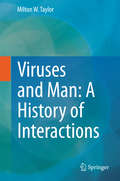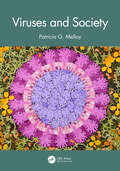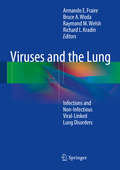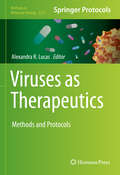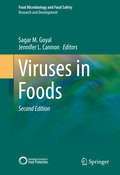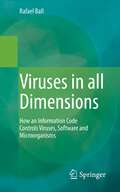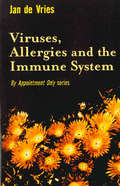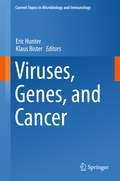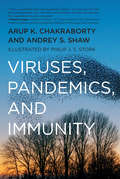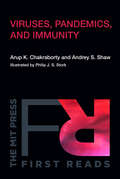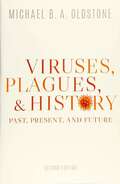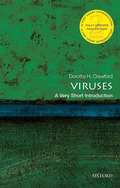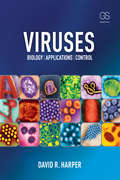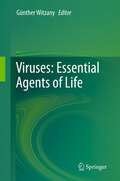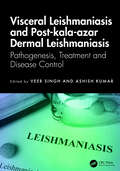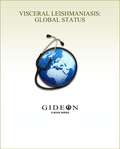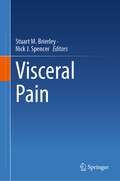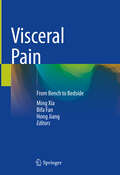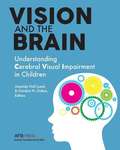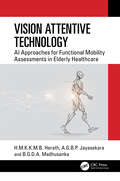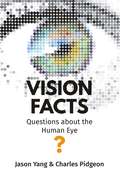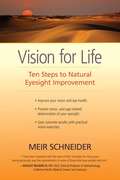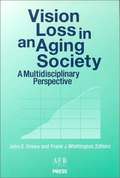- Table View
- List View
Viruses and Man: A History of Interactions
by Milton W. TaylorMilton Taylor, Indiana University, offers an easy-to-read and fascinating text describing the impact of viruses on human society. The book starts with an analysis of the profound effect that viral epidemics had on world history resulting in demographic upheavals by destroying total populations. It also provides a brief history of virology and immunology. Furthermore, the use of viruses for the treatment of cancer (viral oncolysis or virotherapy) and bacterial diseases (phage therapy) and as vectors in gene therapy is discussed in detail. Several chapters focus on viral diseases such as smallpox, influenza, polio, hepatitis and their control, as well as on HIV and AIDS and on some emerging viruses with an interesting story attached to their discovery or vaccine development. The book closes with a chapter on biological weapons. It will serve as an invaluable source of information for beginners in the field of virology as well as for experienced virologists, other academics, students, and readers without prior knowledge of virology or molecular biology.
Viruses and Society
by Patricia G. MelloyViruses and Society is geared towards professionals and students in college-level introductory biology courses devoted to understanding viruses, vaccines, and their global impact. The beginning of the book introduces cells, DNA, and viruses themselves. There follows a review of how the immune system works and how scientists and physicians harness the immune system to protect people through vaccines. Specific chapters will focus on the 1918 influenza pandemic, the fight to eradicate polio, the HIV/AIDS pandemic, and our current COVID-19 crisis. Additionally, the book reviews the uses of viruses in genetic engineering and in gene therapy as well. The book will conclude by describing public health initiatives to keep emerging viruses in check and the role of scientific communication in how viruses are perceived and have an impact on our society. Key Features 1) The text employs approachable and simplified language 2) Provides all the essential elements for understanding virus biology 3) Includes details on how viruses affect individuals 4) Describes the ways public health decisions are made in light of how viral pathogens spread 5) Highlights up to date scientific findings on the features of emerging viruses that will always be with us
Viruses and the Lung
by Armando E. Fraire Bruce A. Woda Raymond M. Welsh Richard L. KradinViruses that primarily target the lung are very significant causes of death and in the past decade have been responsible for major outbreaks of severe adult respiratory distress syndrome and H1N1 influenza. This book is distinctive in that the entire spectrum of viral disease of the lung is conveniently compiled within a single volume. The epidemiologic, ultrastructural, immunologic, and clinicopathologic features of well-known viral pathogens and newer emergent infectious agents are discussed in detail. After sections on lung defenses and the taxonomic classification of pneumotropic viruses, the various acute viral infections are considered in a standard format in the main body of the book. Subsequent sections are devoted to the human immunodeficiency virus, viral disease in the neonate and infant, viral infections in the setting of transplantation, and viral-linked tumoral and nontumoral lung conditions. The text is supplemented by numerous color images.
Viruses as Therapeutics: Methods and Protocols (Methods in Molecular Biology #2225)
by Alexandra R. LucasThis detailed volume explores methods and techniques reflecting how viruses can be a beneficial force for all levels of life as well as the mammalian microbiota. Beginning with methods for the development and study of viruses, the book continues with current techniques and approaches used to develop new treatments from virus-derived vaccines to vectors and proteins, such as a range of models and methods designed to measure therapeutic efficacy of virus-derived biologics and therapeutic proteins. Written for the highly successful Methods in Molecular Biology series, chapters include introductions to their respective topics, lists of the necessary materials and reagents, step-by-step, readily reproducible laboratory protocols, and tips on troubleshooting and avoiding known pitfalls. Authoritative and practical, Viruses as Therapeutics: Methods and Protocols is an ideal guide for researchers working to further understand how viruses can benefit lifeforms and even prevent damage from other viruses.
Viruses in Foods
by Sagar M. Goyal Jennifer L. CannonFoodborne viruses are an important group of pathogens recognizedto cause significant disease globally, in terms of both number ofillnesses and severity of disease. Contamination of foods by enteric viruses, such ashuman norovirus and hepatitis A and E viruses, is a major concern to publichealth and food safety. Food Virology is a burgeoning field of emphasis for scientificresearch. Many developments in foodborne virus detection, prevention and control havebeen made in recent years and are the basis of this publication. This second edition of Viruses in Foods provides anup-to-date description of foodborne viruses of public health importance, including theirepidemiology and methods for detection, prevention and control. It uniquely includes casereports of past outbreaks with implications for better control of future outbreaks, asection that can be considered a handbook for foodborne virus detection, and updated andexpanded information on virus prevention and control, with chapters on naturalvirucidal compounds in foods and risk assessment of foodborne viruses.
Viruses in all Dimensions: How an Information Code Controls Viruses, Software and Microorganisms
by Rafael BallMicroorganisms, viruses, and computer programs encode all the information necessary to reproduce and spread themselves. Yet these mechanisms are amazingly similar in the animate world, in the world of viruses, and even in the world of technical systems. The book shows how great the parallels are between these various animate and inanimate replicating systems and what they are based on.The excursion also leads into the fascinating world of genetics, to the question of what defines life and into the programming of software that multiplies itself independently. Finally, the question is derived whether and to what extent such self-replicating technical systems can become as dangerous as infectious viruses in triggering pandemics, such as the Corona pandemic in 2020.
Viruses, Allergies and the Immune System
by Jan de VriesWhy are problems such as viruses, allergies and post-viral syndrome increasingly prevalent today? Is it true that a simple allergy might develop into a serious degenerative disease? What part does the immune system play in these processes - and how can it be affected by lifestyle?Jan de Vries places a strong emphasis on the importance of diet, and the effects of food additives and drugs. Did you know that schizophrenia can be treated through diet? Or that the lives of hyperactive children - and their parents - can be returned to normal by eliminating even a single item from their food intake? It has even been proven that diet and allergies can have an influence on crime. Together with other well-known nutritionists from around the world, the author has studied this phenomenon in detail and includes some illuminating case histories in this book.
Viruses, Genes, and Cancer (Current Topics in Microbiology and Immunology #407)
by Eric Hunter Klaus BisterThis volume focuses on virus-host cell interactions, cellular genes acquired or modulated by viruses, the pathological effects of these interactions, and therapeutic interventions. Several chapters specifically address the role of viruses and genes - such as oncogenes, proto-oncogenes, or tumor suppressor genes - in the etiology of human cancer. Oncogenic signaling by PI3 kinase, mTOR, Akt, or the major cancer drivers MYC and RAF, and the role of tumor suppressors like p53, are discussed in detail. The volume also explores the emerging role of noncoding RNAs such as microRNAs in tumorigenesis and cancer therapeutics, and offers new insights into the role of HIV-host interactions relevant to pathogenesis and treatment. Gathering contributions written by leading scientists in their respective fields, the volume offers a valuable resource for researchers and clinicians alike.
Viruses, Pandemics, and Immunity
by Arup K. Chakraborty Andrey ShawHow viruses emerge to cause pandemics, how our immune system combats them, and how diagnostic tests, vaccines, and antiviral therapies work.Throughout history, humans have contended with pandemics. History is replete with references to plagues, pestilence, and contagion, but the devastation wrought by pandemics had been largely forgotten by the twenty-first century. Now, the enormous human and economic toll of the rapidly spreading COVID-19 disease offers a vivid reminder that infectious disease pandemics are one of the greatest existential threats to humanity. This book provides an accessible explanation of how viruses emerge to cause pandemics, how our immune system combats them, and how diagnostic tests, vaccines, and antiviral therapies work-- concepts that are a foundation for our public health policies.
Viruses, Pandemics, and Immunity (MIT Press First Reads)
by Arup K. Chakraborty Andrey ShawHow viruses emerge to cause pandemics, how our immune system combats them, and how diagnostic tests, vaccines, and antiviral therapies work.Throughout history, humans have contended with pandemics. History is replete with references to plagues, pestilence, and contagion, but the devastation wrought by pandemics had been largely forgotten by the twenty-first century. Now, the enormous human and economic toll of the rapidly spreading COVID-19 disease offers a vivid reminder that infectious disease pandemics are one of the greatest existential threats to humanity. This book provides an accessible explanation of how viruses emerge to cause pandemics, how our immune system combats them, and how diagnostic tests, vaccines, and antiviral therapies work-- concepts that are a foundation for our public health policies.
Viruses, Plagues, And History: Past, Present, And Future
by Michael B. A. OldstoneMore people were killed by smallpox during the twentieth century--over 300 million--than by all of the wars of that period combined. In 1918 and 1919, influenza virus claimed over 50 million lives. A century later, influenza is poised to return, ongoing plagues of HIV/AIDS and hepatitis infect millions, and Ebola, Zika, and West Nile viruses cause new concern and panic. The overlapping histories of humans and viruses are ancient. Earliest cities became both the cradle of civilization and breeding grounds for the first viral epidemics. This overlap is the focus of virologist/immunologist Michael Oldstone in Viruses, Plagues and History. Oldstone explains principles of viruses and epidemics while recounting stories of viruses and their impact on human history. This fully updated second edition includes engrossing new chapters on hepatitis, Zika, and contemporary threats such as the possible return of a catastrophic influenza, and the impact of fear of autism on vaccination efforts. This is a fascinating panorama of humankind's longstanding conflict with unseen viral enemies, both human successes--such as control of poliomyelitis, measles, smallpox and yellow fever, and continued dangers--such as HIV and Ebola. Impeccably researched and accessibly written, Viruses, Plagues and History will fascinate all with an interest in how viral illnesses alter the course of human history.
Viruses: A Very Short Introduction (Very Short Introductions)
by Dorothy H. CrawfordViruses are big news. From pandemics such as HIV, swine flu, and SARS, we are constantly being bombarded with information about new lethal infections. In this Very Short Introduction Dorothy Crawford demonstrates how clever these entities really are. From their discovery and the unravelling of their intricate structures, Crawford demonstrates how these tiny parasites are by far the most abundant life forms on the planet. With up to two billion of them in each litre of sea water, viruses play a vital role in controlling the marine environment and are essential to the ocean's delicate ecosystem. Analyzing the threat of emerging virus infections, Crawford recounts stories of renowned killer viruses such as Ebola and rabies as well as the less known bat-borne Nipah and Hendra viruses. Pinpointing wild animals as the source of the most recent pandemics, she discusses the reasons behind the present increase in potentially fatal infections, as well as evidence suggesting that long term viruses can eventually lead to cancer. By examining our lifestyle in the 21st century, Crawford looks to the future to ask whether we can ever live in harmony with viruses, and considers the ways in which we may need to adapt to prevent emerging viruses with devastating consequences.
Viruses: Agents of Evolutionary Invention
by Michael G. CordingleyWhile viruses—the world’s most abundant biological entities—are not technically alive, they invade, replicate, and evolve within living cells. Michael Cordingley goes beyond our familiarity with infections to show how viruses spur evolutionary change in their hosts and shape global ecosystems, from ocean photosynthesis to drug-resistant bacteria.
Viruses: Biology, Applications, and Control
by David HarperViruses: Biology, Application, and Control is a concise advanced undergraduate and graduate textbook covering the essential aspects of virology included in biomedical science courses. It is an updated and expanded version of David Harper‘s Molecular Virology 2e from the Medical Perspectives series. Selected Contents: 1. Virus Structure and Infection 2. Virus classification and evolution 3. Virus Replication 4. Viral Interaction with the Immune System 5. Vaccines and vaccination 6. Antiviral Drugs 7. Beneficial Use of Viruses 8. Emergence, transmission, and extinction 9. Viruses, vectors, and genomics 10. Virus Culture, Detection and Diagnosis Viral Replication Strategies Appe
Viruses: Essential Agents of Life
by Günther WitzanyA renaissance of virus research is taking centre stage in biology. Empirical data from the last decade indicate the important roles of viruses, both in the evolution of all life and as symbionts of host organisms. There is increasing evidence that all cellular life is colonized by exogenous and/or endogenous viruses in a non-lytic but persistent lifestyle. Viruses and viral parts form the most numerous genetic matter on this planet.
Viruses: Intimate Invaders
by Van G. WilsonThis book guides through the fascinating world of viruses and makes readers enjoy science in an accessible way. Virologist and author Professor Van Wilson imparts knowledge about what viruses are, how they work, and how much they impact life on Earth. The book equips the reader with the scientific basics behind virus function and presents the historic milestones of virus research and discovery. Well-known viruses such as HIV or Influenza are tackled alongside novel pathogens like coronavirus SARS-CoV-2. Professor Wilson explores where they come from and how they impact our society. Last but not least the book provides exciting insights into how our immune system reacts to different viruses and how vaccines contribute to conquer pandemics. While scientifically informative, this book makes the field of virology understandable to a lay audience and encourages readers to further thinking. And more importantly, it conveys the wonder, beauty, and mystery of these ubiquitous, microscopic marvels. This book addresses anyone interested in understanding the principles of virology, viral diseases, or the impact of viruses on human societies.
Visceral Leishmaniasis and Post-kala-azar Dermal Leishmaniasis: Pathogenesis, Treatment and Disease Control
by Pathogenesis, Treatment and Disease ControlThis reference book explores various aspects of visceral leishmaniasis (VL) and post-kala-azar dermal leishmaniasis (PKDL), including their pathophysiology, treatment options, and disease control strategies. The initial chapter provides an overview of VL, its global impact, and pathogenesis. It also examines the development of PKDL from VL, outlining the transition from the acute form of the disease to the chronic dermal condition. The book further explores the symptoms and diagnosis of both VL and PKDL. Furthermore, the book delves into the immunopathogenesis of both VL and PKDL, shedding light on the complex interactions between the parasite and the host immune system. It reviews the impact of environmental factors, particularly the contamination of arsenic and antimony in drinking water, on the progression of the disease. Lastly, the book discusses preventive measures for PKDL and highlights the major challenges in effectively implementing these strategies. This book serves as a useful resource for researchers, healthcare professionals, and policymakers seeking to deepen their understanding of these diseases and develop effective strategies for their prevention and control.Key features Provides in-depth coverage of VL and PKDL, including pathogenesis, treatment, and disease control strategies Elucidates the symptoms and diagnostic methods for VL and PKDL Offers insights into the complex immunopathogenesis of VL and PKDL, exploring the interactions between parasites and host immune system Examines treatment options for both VL and PKDL, including current therapeutic approaches and emerging strategies Reviews the impact of environmental factors, such as arsenic and antimony contamination, on the disease progression Discusses preventive measures and challenges in implementing effective strategies for PKDL prevention and control
Visceral Leishmaniasis: Global Status 2010 edition
by Dr Stephen Berger Gideon InformaticsVisceral Leishmaniasis: Global Status is one in a series of GIDEON ebooks which summarize the status of individual infectious diseases, in every country of the world. Data are based on the GIDEON database (www.gideononline.com) which relies on standard text books, peer-review journals, Health Ministry reports and ProMED, supplemented by an ongoing search of the medical literature. Chapters are arranged alphabetically, by country name. Each section is divided into five subsections. 1. Descriptive epidemiology 2. Summary of clinical features 3. Global status of the disease 4. Status of the disease in a specific country 5. References
Visceral Pain
by Nick J. Spencer Stuart M. BrierleyThe chapters in this book are based on the Visceral Pain conference in Adelaide, Australia, under the auspices of the International Federation for Neurogastroenterology and Motility in 2021. This is one of the hottest fields of science and includes mechanisms involving how the microbiome communicates with the brain and how, when disordered, these mechanisms contribute to clinical diseases such as Irritable Bowel Syndrome and Inflammatory Bowel Disease. Researchers from around the globe presented their latest findings as a review of the current state of the art in the field from both the clinical and scientific points of view. These systems are now appreciated as being critical for shaping our well-being and their disorders underlie chronic clinical conditions of significant morbidity and mortality. The author team includes long-established authorities who significantly contributed to the advances in visceral pain research over the past two decades and the new generation that will continue to contribute to advancing our understanding of the field.
Visceral Pain: From Bench to Bedside
by Hong Jiang Ming Xia Bifa FanPatients with chronic visceral pain present a challenge for medical providers because of their vague presenting symptoms and frequent lack of identifiable pathology. Despite this, chronic visceral pain can be a debilitating medical condition that increases morbidity and decreases quality of life; the long-term consequences of which cause significant socioeconomic burden and debility. Covering the newest trends, studies, diagnosis and treatments in visceral pain care, as well as the pain treatment strategies that have been successfully employed in the past, this book brings readers fully up to date with effective recognitions and treatments for visceral pain. The clinical evaluation and presentation of common chronic visceral pain conditions and multimodal treatment options that can be used to assist patients and providers are focused.
Vision And The Brain: Understanding Cerebral Visual Impairment In Children
by Amanda Hall Lueck Gordon DuttonCerebral visual impairment (also known as cortical visual impairment, or CVI) has become the most common cause of visual impairment in children in the United States and the developed world. Vision and the Brain is a unique and comprehensive sourcebook geared especially to professionals in the field of visual impairment, educators, and families who need to know more about the causes and types of CVI and the best practices for working with affected children. Expert contributors from many countries represent education, occupational therapy, orientation and mobility, ophthalmology, optometry, neuropsychology, psychology, and vision science, and include parents of children with CVI. The book provides an in-depth guide to current knowledge about brain-related vision loss in an accessible form to enable readers to recognize, understand, and assess the behavioral manifestations of damage to the visual brain and develop effective interventions based on identification of the spectrum of individual needs. Chapters are designed to help those working with children with CVI ascertain the nature and degree of visual impairment in each child, so that they can "see" and appreciate the world through the child's eyes and ensure that every child is served appropriately.
Vision Attentive Technology: AI Approaches for Functional Mobility Assessments in Elderly Healthcare
by B.G.D.A. Madhusanka H.M.K.K.M.B. Herath A.G.B.P. JayasekaraThis book provides a comprehensive overview of the use of vision attentive technology and artificial intelligence methodologies for functional mobility assessment in elderly populations.Vision Attentive Technology and Functional Mobility Assessment in Elderly Healthcare, begins with a general introduction to vision-attentive technology and its uses in the care of older people. Next it examines functional mobility in senior populations and offers a critique of the methods used today for evaluation. The authors then present several artificial intelligence approaches and vision-aware systems used for screening age related diseases such as Parkinson's disease and sarcopenia. The book also presents the difficulties and possibilities of using visual attentive technology to identify functional impairments caused by aging.This book would be helpful to researchers in the field of healthcare, especially those interested in using technology to enhance patient outcomes. Geriatricians, physical therapists, and occupational therapists who treat older patients will also benefit from reading this book. It will also be helpful to readers who are studying biomedical engineering, artificial intelligence, and healthcare.
Vision Facts: Questions about the Human Eye
by Jason Yang Pidgeon CharlesVision Facts is a question and answer guide to the wonders of the human eye, its complex structures and the process of visual perception. It traces the journey of vision from a ray of light entering the eye to the processing done by the brain, to the development and aging of the human visual system and common disorders associated with both processes. Organized in an intuitive question-and-answer format and accompanied by clear diagrams, Vision Facts provides answers regarding your vision in a manner accessible to all who are interested. Each topic includes references to external resources such as lecture notes and research papers for those who wish to delve deeper. It is a perfect handbook for anyone who is interested in visual science, sensory processing, neuroscience, or physiology; and is an excellent reference for anyone considering a career in ophthalmology or optometry.°Some examples of the questions include the following. What is the resolution of the eye? Why do astronomers often cover flashlights with a red filter while stargazing? What is color-blindness and how does it occur? What role does vision play in the circadian rhythm? What chemical signals cause the eye to develop into its mature form? How does alcohol during pregnancy affect eye development? How well can a newborn baby see? How does being born prematurely affect vision? What is 20/20 vision? How does aging affect vision? These are all questions that are addressed in Vision Facts, along with countless more.
Vision For Life: Ten Steps To Natural Eyesight Improvement
by Meir SchneiderIn Vision for Life, natural health pioneer Meir Schneider shares ten essential principles of healthy vision discovered in his forty-year personal and professional journey. Born almost blind, Schneider taught himself to see and developed an innovative program of healing and recovery that has helped thousands of people regain and improve their health. Vision for Life is packed with exercises for a natural eye health routine, which you can immediately incorporate into your life, and includes a set of eye chart posters to use together with the book. This program is not only strengthening but also restorative and deeply relaxing. You will learn how to reverse developing issues before they cause damage and how to remedy existing problems including near- and far-sightedness and lazy eye as well as cataracts, glaucoma, optic neuritis, detached retinas and tears, macular degeneration, and retinitis pigmentosa. Vision for Life is not only for people who see poorly and would like to improve their vision, but also for those with 20/20 vision who wish to maintain their perfect eyesight as they grow older. Clients of the Meir Schneider Self-Healing Method experience their own capacity to bring about recovery, reversing the progress of a wide range of degenerative conditions such as arthritis and muscular dystrophy as well as eye disease. Based in part on the established Bates Method of eyesight improvement and in part on his own professional and personal discoveries, Meir Schneider's pioneering approach has helped thousands of people successfully treat a host of eye problems, including nearsightedness, farsightedness, astigmatism, lazy eye, double vision, glaucoma, cataracts, macular degeneration, retinal detachment, retinitis pigmentosa, and nystagmus. Born blind to deaf parents, Schneider underwent a series of painful operations as a young child and was left with ninety-nine percent scar tissue on his eyes, resulting in his being declared incurably blind. At the age of seventeen, he discovered how to improve his vision from one percent to fifty-five percent of normal vision with the eye exercises presented in this book. Today Schneider drives a car, reads, and proves time and again that vision can and does improve with exercise. His contributions to the field of self-healing are recognized by alternative health practitioners and medical doctors alike.
Vision Loss in an Aging Society: A Multidisciplinary Perspective
by John E. Crews Frank J. WhittingtonThis book makes an important contribution to our understanding of the many facets of experience facing those with eye problems. It does so through a multidisciplinary examination of the elements of professional practice, research, policy, and intervention related to vision loss and vision rehabilitation.
